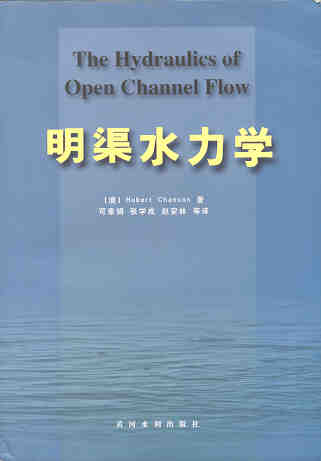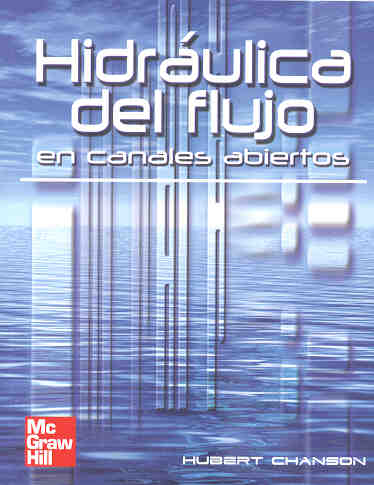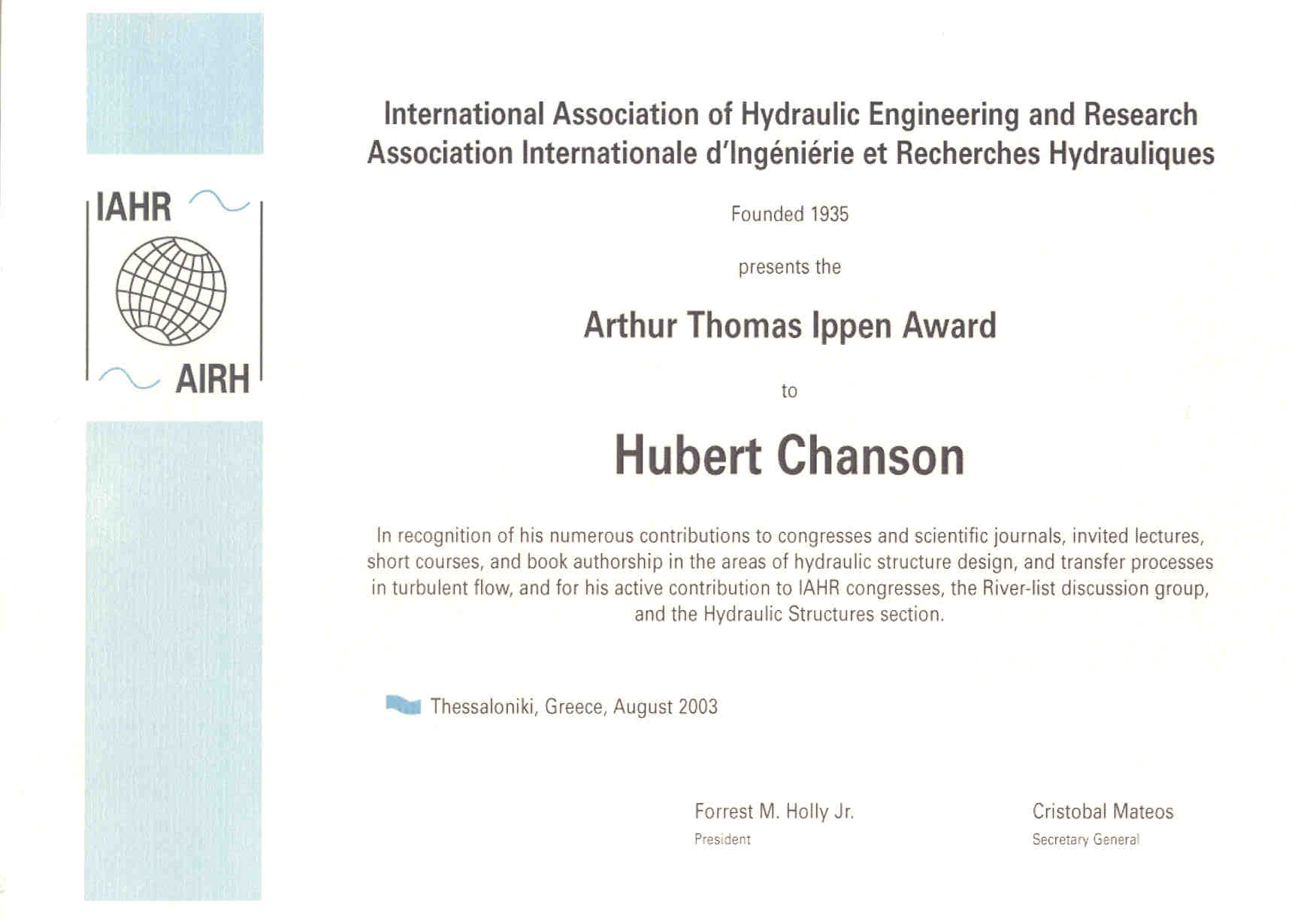The Formal Water Garden
Stepped cascades, fountains
and water staircases
by Hubert CHANSON (h.chanson@uq.edu.au)
M.E., ENSHM Grenoble, INSTN, PhD (Cant.), DEng (Qld),
Eur.Ing., MIEAust., MIAHR, 13th Arthur Ippen awardee
Professor of Civil Engineering, The University of
Queensland,
Brisbane
QLD 4072, Autralia
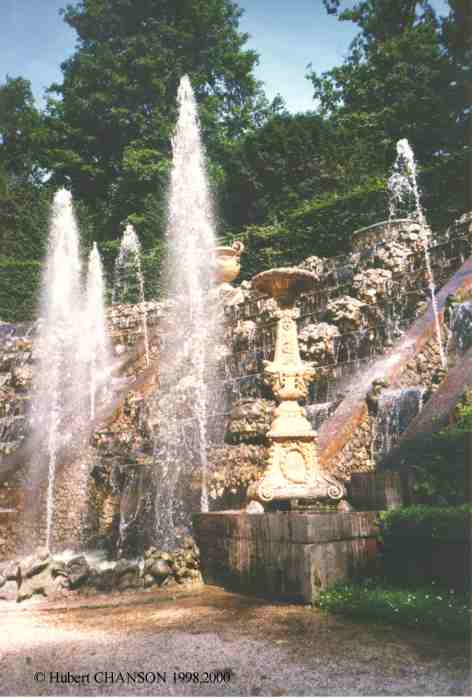 In
decorative architecture, waterfalls and cascades are used to please the
eye and the ear. They provide a focal point as well as sounds generated
by water splashing and cascading (e.g. Franklin Roosevelt memorial).
Cascades
can enhance the perception of a site by providing recreational
facilities,
an alteration of environmental factors to increase human comfort, a
project
image, a focal point or captivating views. In an oppressive environment
(e.g. crowdy cities like Hong
Kong and Tokyo), running waters can mask aggressive noise and help
to provide an atmosphere of quietness and calm. They can focalise
public
attention on a particular setting (e.g., a theatre at Le
Bosquet des Rocailles, Versailles). Water can be also a significant
element in interior landscapes where water provides simultaneously
tranquillity
and vitality.
In
decorative architecture, waterfalls and cascades are used to please the
eye and the ear. They provide a focal point as well as sounds generated
by water splashing and cascading (e.g. Franklin Roosevelt memorial).
Cascades
can enhance the perception of a site by providing recreational
facilities,
an alteration of environmental factors to increase human comfort, a
project
image, a focal point or captivating views. In an oppressive environment
(e.g. crowdy cities like Hong
Kong and Tokyo), running waters can mask aggressive noise and help
to provide an atmosphere of quietness and calm. They can focalise
public
attention on a particular setting (e.g., a theatre at Le
Bosquet des Rocailles, Versailles). Water can be also a significant
element in interior landscapes where water provides simultaneously
tranquillity
and vitality.
Stepped fountains and water staircases combine simple architectural
forms with a large amount of splashing and 'white waters' (CHANSON
1997). The stepped geometry is well suited to a steep topography:
i.e.,
La Grande Cascade de Saint-Cloud on a steep hill slope facing Paris and
the Seine river, l'Escalier
d'Eau du Château du Touvet on the flank of the
Chârtreuse
mountain range in the French Alpes. Aesthetical applications of water
staircases
include stepped cascades in parks and gardens (e.g. at Versailles,
St-Petersburg)
and stepped fountains in cities (e.g in Hong Kong, Paris, Taipei,
Tokyo).
Rushing waters along stepped cascades may reflect some parallel with
mountain
rivers or natural cataracts : e.g., the cataracts of the Nile river,
the
Zambesi rapids in Africa or the Rhine waterfalls. In cities stepped
cascades
and fountains act as 'urban oasis'. Indeed torrent streams are renown
for
their drinking quality (i.e. 'eau de source') and sense of freshness.
Stepped
cascades can be also designed as multipurpose systems : e.g., for river
training, water quality systems (TOOMBES and
CHANSON
2000).
History of stepped fountains, water staircases and cascades
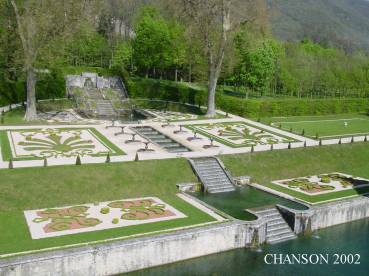 Over
the centuries fountains and cascades have been used as recreational and
artistic features (CHANSON 1995,1998). Greek
and Roman
architects designed fountains several thousands years ago. The Muslims
developed also a strong artistic sense for water gardens. The Mongols
gained
expertise from them after the conquest of Persia. Their descendants,
the
'Mughals', imported the Moorish garden expertise in India where they
built
superb water gardens in Kashmir. In Europe, the tradition of stepped
cascades
appeared (or re-appeared) in Italy around the Renaissance period (e.g.
Villa d'Este, Tivoli). The French gardeners became the Masters of
stepped
cascade design during the 17th century : e.g., Rueil,
Marly, Sceaux, St-Cloud, Versailles. Their work influenced all the
European
countries for the next 200-years. Among the French designs , the
gardens
of Le Château de Marly were most renown. The park included
several
magnificent cascades (e.g. La Rivière) which were copied all
over
Europe including at Chatsworth (UK), Peterhof (Russia), La Granja
(Spain)
and Wilhemshöhe (Germany) (CHANSON 1998).
At Peterhof one cascade is even called 'Marly' ! It is worth noting
some
design similitude between the Mughal and French gardens. PLUMPTRE
(1993) noted the similarity of garden architecture between the Taj
Mahal completed in 1654 and Vaux-le-Vicomte (completed in 1656). The
parallel
can be further extended to stepped cascade design : e.g., Nishat Bagh
(around
1640) and Rueil (1638), Achabal (around 1620) and Marly (1687). The
famous
French and Mughal gardens were completed only few years apart albeit
the
absence of direct contact between the French kingdom and the Mughal
empire.
While the Taj Mahal and Nishat Bagh were the ultimate achievements in
Mughal
art, Vaux-le Vicomte and Rueil were the precursors of the 17th/18th
century
European water gardens and cascades.
Over
the centuries fountains and cascades have been used as recreational and
artistic features (CHANSON 1995,1998). Greek
and Roman
architects designed fountains several thousands years ago. The Muslims
developed also a strong artistic sense for water gardens. The Mongols
gained
expertise from them after the conquest of Persia. Their descendants,
the
'Mughals', imported the Moorish garden expertise in India where they
built
superb water gardens in Kashmir. In Europe, the tradition of stepped
cascades
appeared (or re-appeared) in Italy around the Renaissance period (e.g.
Villa d'Este, Tivoli). The French gardeners became the Masters of
stepped
cascade design during the 17th century : e.g., Rueil,
Marly, Sceaux, St-Cloud, Versailles. Their work influenced all the
European
countries for the next 200-years. Among the French designs , the
gardens
of Le Château de Marly were most renown. The park included
several
magnificent cascades (e.g. La Rivière) which were copied all
over
Europe including at Chatsworth (UK), Peterhof (Russia), La Granja
(Spain)
and Wilhemshöhe (Germany) (CHANSON 1998).
At Peterhof one cascade is even called 'Marly' ! It is worth noting
some
design similitude between the Mughal and French gardens. PLUMPTRE
(1993) noted the similarity of garden architecture between the Taj
Mahal completed in 1654 and Vaux-le-Vicomte (completed in 1656). The
parallel
can be further extended to stepped cascade design : e.g., Nishat Bagh
(around
1640) and Rueil (1638), Achabal (around 1620) and Marly (1687). The
famous
French and Mughal gardens were completed only few years apart albeit
the
absence of direct contact between the French kingdom and the Mughal
empire.
While the Taj Mahal and Nishat Bagh were the ultimate achievements in
Mughal
art, Vaux-le Vicomte and Rueil were the precursors of the 17th/18th
century
European water gardens and cascades.
After the 18th century, the interest for the great cascades seemed
to fade away , but in the cities where stepped fountains have been
built
since the Roman times (e.g. Hong
Kong Park). In modern times, the concept of multi-purpose cascades
was re-developed. Near Chicago (USA), five re-oxygenation cascades were
landscaped as leisure parks combining aesthetics and water quality
enhancement.
In Japan and Taiwan, stepped river training are combined with
attraction
parks. Another use is the fish ladders designed as both aesthetical
cascades
and fishways in North-America. More recently a modern "great cascade"
surrounded
the olympic cauldron at the Sydney 2000 Olympic Games opening ceremony.
The cascade consisted of 77 flat horizontal steps and it operated in a
nappe flow regime.
Discussion
Most historical stepped cascades were designed with pooled steps. The
pooled step design allows a better control of the flow rate and prevent
the occurrence of hydraulic jump. Urban fountains are typically
designed
with a small number of large steps (h = 0.2 to 1 m). The design of some
cascades was quite difficult. For example, the unsteady aerated flows
on
the chadars at Nishat Bagh, the parallel water staircases at
Château
du Touvet (Figure),
the water supply system at Château de Versailles. It is believed
that some water garden designers had a solid hydraulic expertise.
 Parallel
with the historical development of stepped fountains
Parallel
with the historical development of stepped fountains
By their size and characteristics (e. CHANSON 1995,1998), the Great
cascades of the 16th/18th century period were very similar to the
stepped
spillways built at the time. La Rivière de Marly was over 300-m
long and it was definitively longer than any stepped weirs at the time.
The cascades of La Granja, Palazzo Reale and Peterhof were also larger
than most contemporary waste waterways. A comparative development of
stepped
fountains and spillways follows.
Greeks and Romans were renown for their urban cascades and fountains.
Later the Moslems built famous water gardens in their empire. Romans
and
Moslems contributed to the dissemination of design expertise both in
stepped
fountains and in stepped spillways since Antiquity. After the Muslim
era,
the exchange of ideas between landscape architects and hydraulic
engineers
(in the field of stepped chutes) vanished. The Moor successors (e.g.
the
Spaniards and the Mughals) did not continue the dual expertise. The
Spanish
contribution to stepped spillway design was uppermost important but the
design of stepped cascades was abandoned in Spain. In India, the
Mughals
kept only the stepped cascade tradition. Famous stepped cascades were
built
by the Italian, French and Mughal princes during the 16th and 17th
centuries
(PLUMPTRE 1993, CHANSON 1998) at a time when stepped spillways and
weirs
were built in Spain (e.g. Alicante dam). But no major stepped spillway
was built in Italy, France nor India during the same period.
The French landscape designers who built the gardens of Versailles
and Marly (and their stepped cascades) were superb surveyors and good
arithmeticians.
They were knowledgeable in water supply engineering (e.g. the Aqueduc
de
Marly supplying waters to Versailles). But they never applied their
expertise
to dam engineering nor river training engineering. In the reverse
sense,
King Philip V of Spain selected a French designer, FRÉMIN, to
built
the stepped cascade of La Granja despite the Spanish expertise in
stepped
spillways. In Russia, the tsar Peter I the Great selected another
Frenchman,
J.B.A. LEBLOND, to design Peterhof's Cascade while he hired a Dutchman
G.W. HENNIN to design and build dams with stepped overflow. The author
has found no evidence suggesting any contact or exchange between HENNIN
and LEBLOND.
The lack of exchange between architects and engineers seems to have
survived up to now. Today most hydraulic engineers ignore the modern
expertise
in stepped cascades. Reversely, most architects are unaware of the
recent
developments in stepped spillway hydraulics.
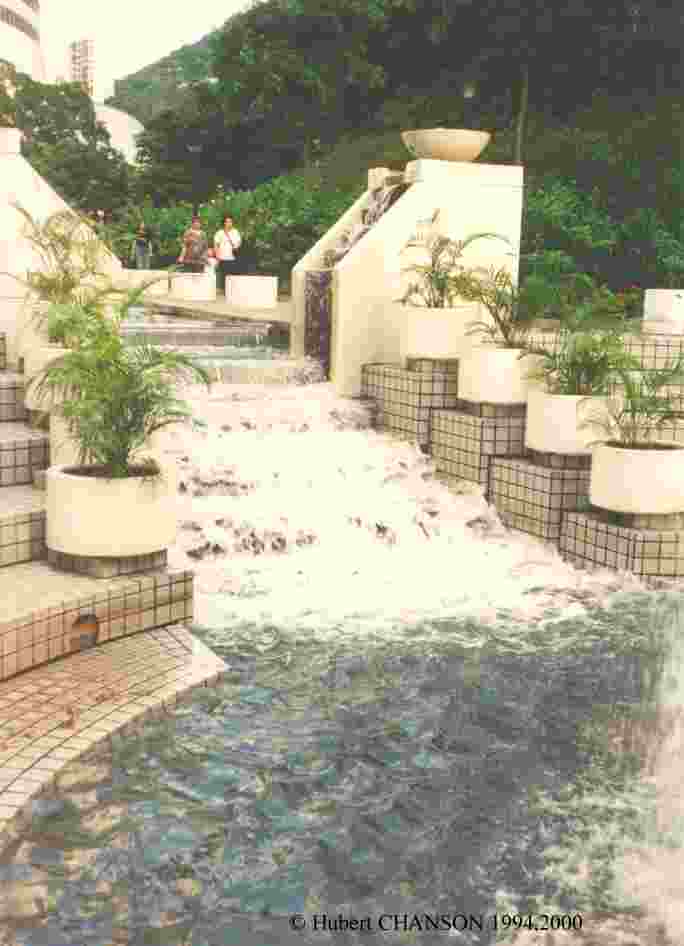
Detailed photographs
Photo No. 1 : Roman
Perge (Turkey) - Water channel from the Northern monumental Nymphaeum
to
the city gate and Hellenistic towers, looking downstream (2nd century
AD)
(Courtesy of M. MENDER and D. MURPHY, Oct. 1997).
Photo No. 2 : La
Grande Cascade de Rueil (France, 1638) : gravure of the cascade
(Courtesy
of the Musée de l'Histoire de Rueil-Malmaison, Mrs KALENITCHENKO
and Mrs D. HELOT-LÉCROART). The château of Rueil was
built and designed by Jacques LEMERCIER in 1625. Cardinal de Richelieu
bought the château in 1631. The complete garden included a Great
Cascade (~ 30 steps) designed by Thomas FRANCINI and completed around
1638.
The cascade was at the end of the Grande Allée. It was suggested
that Rueil's cascade and gardens were inspired by Frascati (Villa
Aldobrandini
?). The Cascade of Rueil inspirated the cascades of Versailles,
St-Cloud
and Sceaux (CHANSON 1998). The cascade was replaced by a green lawn in
1720. The 17-th century formal garden does not exist any longer.
Imperatrice
Joséphine stayed in Rueil and orderd a remodelling of the park.
Photo No. 3 : Bosquet des
Rocailles,
Château de Versailles (France, 1683) : panoramic view in June
1998.
Le Bosquet des Rocailles (or Bosquet de la Salle de Bal) was built
between 1680 and 1683 by J. MANSART in the gardens of the Chateau de
Versailles
(France). The sculptures were by Pierre LEGROS (1629-1714) and
Benoît
MASSOU (1627-1684). The cascade comprises : 5 8-steps fountains, 8
7-steps
fountains, and 4 4-steps fountains. The Bosquet itself was designed by
LENOTRE in 1680. The scene was modified in 1690 and flowers were
introduced
in 1691.
Photo No. 4 : L'escalier d'eau
des
jardins du Château du Touvet, Le Touvet (Isère, France,
1770)
: looking downstream at the water staircase with the Belledonne
mountains
in background (Courtesy of Mr B. de QUINSONA, copyrights Jardins du
Touvet).
The first "château" was built during the 13-th century. The
present
chateau was built in 15th century. Between 1753 and 1770, the Comte
Pierre
de MARCIEU re-designed the garden, including a new water staircase. The
staircase is very pretty. The staircase is divided in 5 successive
series
of steps (pooled steps with rounded crest). From the top to the bottom
: a steep cascade (> 8
steps),
a second steep cascade (9 steps), followed by a flat series of drops (6
steps, slope ~ 6 deg.), a steep cascade (10 steps, slope ~ 27 deg.),
and
another steep cascade (8 steps). Visit the website of the Château
du Touvet : {http://www.touvet.com/}.
Photo No. 5
:
Hong Kong Park (Hong Kong) : water staircase in Sept. 1994.
Photo No. 6 : step-pooled cascade
in the Floral Park at Hama-matsu, Japan on 9 March 1999. It acts as a
pool-stepped
spillway of an aesthetic pond. The photograph was taken in winter when
the cascade was dry.
References
CHANSON, H. (1995). "Hydraulic
Design of Stepped Cascades, Channels, Weirs and Spillways."
Pergamon,
Oxford, UK, Jan., 292 pages (ISBN 0-08-041918-6).
CHANSON, H. (1997). "Air
Bubble
Entrainment in Free-Surface Turbulent Shear Flows." Academic Press,
London, UK, 401 pages (ISBN 0-12-168110-6).
CHANSON, H. (1998). "Le Développement Historique des Cascades et
Fontaines en Gradins." ('Historical Development of Stepped Cascades and
Fountains.') Jl La Houille Blanche, No. 7/8, pp. 76-84 (ISSN
0018-6368) (in French). (Download PDF
file)
CHANSON, H. (2004). "Environmental Hydraulics of Open Channel
Flows." Elsevier-Butterworth-Heinemann,
Oxford, UK, 483 pages (ISBN 0 7506 6165 8).
CHANSON, H. (2004). "The Hydraulics of Open Channel Flows : An
Introduction." Butterworth-Heinemann,
2nd edition, Oxford, UK, 630 pages (ISBN 0 7506 5978 5).
CHANSON, H., and TOOMBES, L. (2002). "Energy
Dissipation and Air
Entrainment in a Stepped Storm Waterway: an Experimental Study." Journal
of Irrigation and Drainage Engineering, ASCE,
Vol. 128, No. 5, pp. 305-315 (ISSN 0733-9437). (Download
PDF File) 2004 American
Society of Civil Engineers,
Environmental and Water Resources Institute (ASCE-EWRI) award
for the best practice paper in the Journal of Irrigation and Drainage
Engineering (Award document).
PLUMPTRE, G. (1993). "The Water Garden." Thames and
Hudson,
London, UK.
TOOMBES, L., and CHANSON, H. (2000). "Air-Water Flow and Gas
Transfer
at Aeration Cascades: a Comparative Study of Smooth and Stepped
Chutes."
Intl
Workshop on Hydraulics of Stepped Spillways, Zürich,
Switzerland,
H.E. MINOR & W.H. HAGER Editors, Balkema Publ., pp. 77-84 (ISBN 90
5809 135X). (download
PDF
file)
TOOMBES, L., and CHANSON, H. (2005). "Air-Water Mass
Transfer on a
Stepped Waterway." Jl of Environ.
Engrg., ASCE, Vol. 131, No. 10, pp. 1377-1386 (ISSN 0733-9372). (Download PDF
file)
Internet links
Château de Versailles - Official Site (in English) {http://www.ChateauVersailles.fr/en/}
Les Fontaines de Versailles (Fountains and cascades, with sound and
animation) (in French) {http://patrick.urbain.free.fr/}
La Machine de Marly {http://www.world.std.com/~hmfh/machine1.htm}
Le Château du Touvet : {http://www.touvet.com/}
Garden design {http://www.suite101.com/welcome.cfm/668}
Sydney 2000 Olympic Games opening ceremony cauldron {http://www.tierney.com.au/projects/olympics/}
License

This work is licensed under a Creative Commons
Attribution-NonCommercial 3.0 Unported License.
Acknowledgments
The author thanks also the following people in providing some
information
: Mr F. BOTTON, Lyon, France; Madame C.M. CHANSON, Paris, France;
Madame
D. HELOT-LÉCROART, Société Historique de
Rueil-Malmaison,
France; Mrs KALENITCHENKO, Musée de l'Histoire de
Rueil-Malmaison,
France; Mr Don LEDINGHAM, LHO Group, Australia; Ms Melissa MENGEL, USA;
Mr Dennis MURPHY, Houston, USA; Mr O. DE QUINSONAS, Château du
Touvet,
France.
Hubert CHANSON
is a Professor in Civil Engineering,
Hydraulic Engineering and Environmental Fluid Mechanics at
the University of Queensland,
Australia. His research interests include design of hydraulic
structures, experimental investigations of two-phase flows, applied
hydrodynamics, hydraulic engineering, water quality modelling,
environmental fluid mechanics, estuarine processes and
natural resources. He has been an active consultant for both
governmental agencies and private organisations. His publication record
includes over 620 international refereed papers and his work was cited
over 3,700 times (WoS) to 6,300 times (Google
Scholar) since 1990.
Hubert Chanson is the
author
of several books : "Hydraulic
Design
of
Stepped Cascades, Channels, Weirs and Spillways" (Pergamon, 1995), "Air Bubble Entrainment in Free-Surface
Turbulent Shear Flows" (Academic
Press, 1997), "The Hydraulics of
Open Channel Flow : An Introduction" (Butterworth-Heinemann, 1st
edition 1999, 2nd editon 2004),
"The Hydraulics of Stepped Chutes and
Spillways" (Balkema, 2001), "Environmental Hydraulics of
Open Channel
Flows" (Butterworth-Heinemann,
2004), "Applied
Hydrodynamics: an Introduction of Ideal and Real Fluid Flows" (CRC Press, 2009),
and "Tidal Bores,
Aegir, Eagre, Mascaret, Pororoca: Theory And Observations" (World
Scientific, 2011). He
co-authored two further books "Fluid
Mechanics
for Ecologists" (IPC Press,
2002) and "Fluid Mechanics for Ecologists. Student Edition" (IPC, 2006). His textbook "The
Hydraulics of Open Channel Flows : An
Introduction" has already been translated into Spanish (McGraw-Hill Interamericana)
and Chinese (Hydrology Bureau of Yellow River Conservancy
Committee), and the second
edition was published in 2004. In 2003, the IAHR
presented him with the 13th Arthur Ippen
Award for outstanding
achievements in hydraulic engineering. The American Society of Civil
Engineers, Environmental and Water Resources Institute (ASCE-EWRI)
presented him with the 2004 award for the Best Practice paper in the
Journal of Irrigation and Drainage Engineering ("Energy
Dissipation and Air Entrainment in
Stepped Storm Waterway" by Chanson and Toombes 2002). Hubert
Chanson edited further several books : "Fluvial,
Environmental and
Coastal Developments in Hydraulic
Engineering" (Mossa, Yasuda & Chanson 2004, Balkema), "Hydraulics.
The Next
Wave" (Chanson & Macintosh 2004, Engineers
Australia), "Hydraulic
Structures: a
Challenge to Engineers and Researchers" (Matos & Chanson 2006, The University of Queensland), "Experiences
and Challenges in Sewers:
Measurements and Hydrodynamics" (Larrate & Chanson 2008,
The University of Queensland),
"Hydraulic
Structures: Useful
Water Harvesting Systems or Relics?" (Janssen & Chanson 2010,
The University of Queensland),
"Balance and
Uncertainty: Water in a Changing World" (Valentine et al. 2011, Engineers Australia).
He chaired the Organisation of the 34th
IAHR World Congress held in Brisbane, Australia between 26
June and 1 July 2011. He chairs the Scientific Committee of the 5th
IAHR International Symposium on Hydraulic Structures to be held in
Brisbane in June 2014.
His Internet home page is http://www.uq.edu.au/~e2hchans.
He also developed a gallery of photographs website {http://www.uq.edu.au/~e2hchans/photo.html}
that received more than 2,000 hits per month since inception.
More pictures of water staircases are
here
... Pictures of natural waterfalls are here
...
More Internet engineering resources ...
More about timber crib weirs
...
More about steel
dams ...
More about engineering
failures ...
More about rubber dams ...
More about the history of arch dams ...
More about air entrainment on spillways
... More about the Formal
Water
Garden .... More about rapid
reservoir sedimentation in Australia ...
More about Minimum Energy Loss culverts
.. More about Minimum Energy
Loss weirs ...
This page was visited 17,016
times between 02-06-2000 and June 2012.
Last updated on 03/01/2014
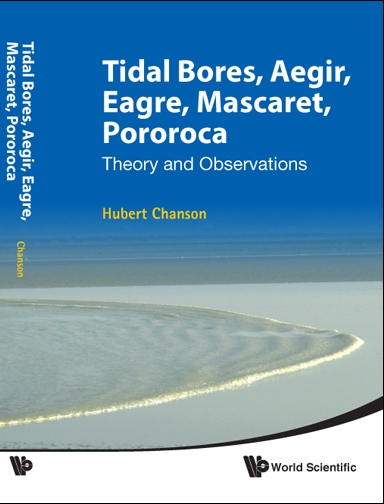
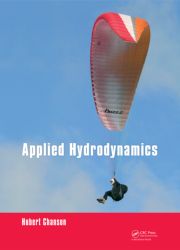
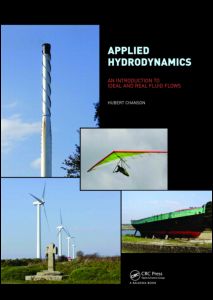

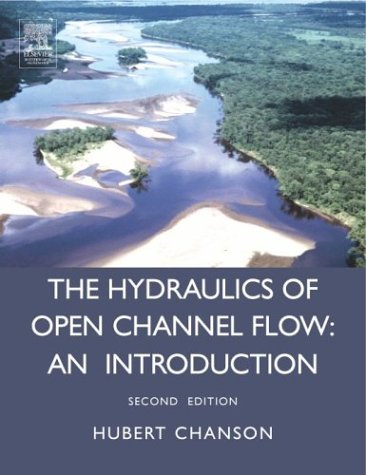
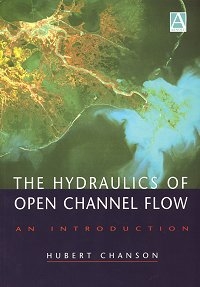
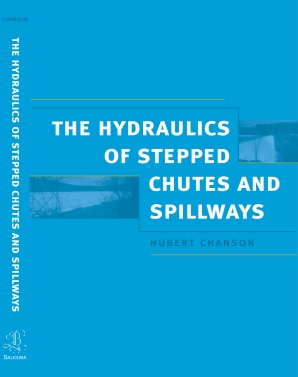


 In
decorative architecture, waterfalls and cascades are used to please the
eye and the ear. They provide a focal point as well as sounds generated
by water splashing and cascading (e.g. Franklin Roosevelt memorial).
Cascades
can enhance the perception of a site by providing recreational
facilities,
an alteration of environmental factors to increase human comfort, a
project
image, a focal point or captivating views. In an oppressive environment
(e.g. crowdy cities like Hong
Kong and Tokyo), running waters can mask aggressive noise and help
to provide an atmosphere of quietness and calm. They can focalise
public
attention on a particular setting (e.g., a theatre at Le
Bosquet des Rocailles, Versailles). Water can be also a significant
element in interior landscapes where water provides simultaneously
tranquillity
and vitality.
In
decorative architecture, waterfalls and cascades are used to please the
eye and the ear. They provide a focal point as well as sounds generated
by water splashing and cascading (e.g. Franklin Roosevelt memorial).
Cascades
can enhance the perception of a site by providing recreational
facilities,
an alteration of environmental factors to increase human comfort, a
project
image, a focal point or captivating views. In an oppressive environment
(e.g. crowdy cities like Hong
Kong and Tokyo), running waters can mask aggressive noise and help
to provide an atmosphere of quietness and calm. They can focalise
public
attention on a particular setting (e.g., a theatre at Le
Bosquet des Rocailles, Versailles). Water can be also a significant
element in interior landscapes where water provides simultaneously
tranquillity
and vitality.













